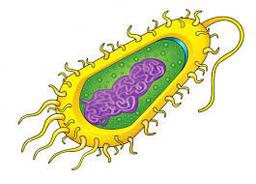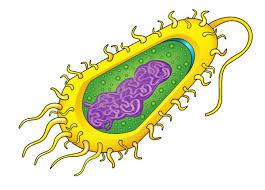
Cell Unit Review
Quiz by Tanya Swink
Feel free to use or edit a copy
includes Teacher and Student dashboards
Measure skillsfrom any curriculum
Measure skills
from any curriculum
Tag the questions with any skills you have. Your dashboard will track each student's mastery of each skill.
With a free account, teachers can
- edit the questions
- save a copy for later
- start a class game
- automatically assign follow-up activities based on students’ scores
- assign as homework
- share a link with colleagues
- print as a bubble sheet
19 questions
Show answers
- Q1A scientist observes a single-celled organism with several long, whip-like tails. Which function do the whip-like tails most likely perform for the organism?detection of the location of lightmeasurement of temperature changesmovement through it's environmentdefense against predators30s
- Q2Which structure and function are common to all plants and some protists and distinguish them from all animals?chloroplasts that conduct photosynthesischloroplasts that conduct cellular respirationmitochondria that conduct cellular respirationmitochondria that conduct photosynthesis30s
- Q3Which characteristic is shared by both prokaryotes and eukaryotes?need oxygen to breathecontain genetic materialhave organ systemsmake their own food30s
- Q4What type of cell has no nuclei, lacks some organelles, is always unicellular and is not found in humans?chloroplastsprokaryotic cellsmitochondriaeukaryotic cells30s
- Q5What type of cells have a nuclei, all types of organelles, are often multicellular and are found in humans?eukaryotic cellschloroplastsprokaryotic cellsribosomes30s
- Q6Which of the following can be found in a eukaryotic cell but not a prokaryotic cell?DNAcytoplasmcell membranemitochondria30s
- Q7Which statement is NOT part of the cell theory?All cells have a nucleus.All organisms are made of cells.All cells com from preexisting cells.Cells are the most basic unit of life.30s
- Q8What parts of the microscope are used to determine the total magnification?light and baseeyepiece and objectivesnosepiece and objectivesbody and nose piece30s
- Q9The cell pictured above isprokaryote because it has ribosomes and a cell walleukaryote because it has ribosomes and a cell wallprokaryote because it has no membrane bound organelleseukaryote because it has membrane bound organelles30s
- Q10In the animal cell picture above, what is the function of the ribosomes?perform photosynthesisdetoxification of drugs and alcoholpackaging of macromoleculesproduction of proteins30s
- Q11Using the diagram above, letter E represents where most of the cell's genetic information is stored? What is this organelle?mitochondriaribosomenucleuschloroplast30s
- Q12Using the diagram above, letter A represents the organelle that supplies the majority of the cell's energy. What is this organelle?ribosomesgolgi bodiesvacuolesmitochondria30s
- Q13Using the diagram above, what letter is showing the organelle directly related to protein production and transportation of materials throughout the cells.BCHK30s
- Q14What is the jellylike substance that is contained inside the cell membrane of all cells?DNAorganellesnucleicytoplasm30s
- Q15Which organelle contains strong enzymes that break down damaged cell parts?lysosomesribosomesmitochondriavacuoles30s
